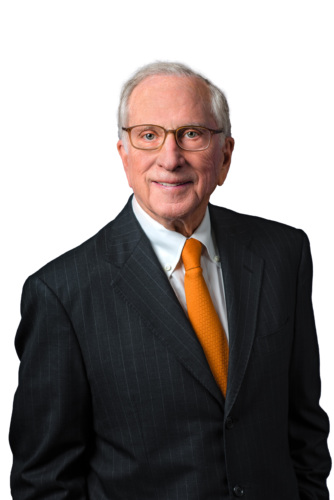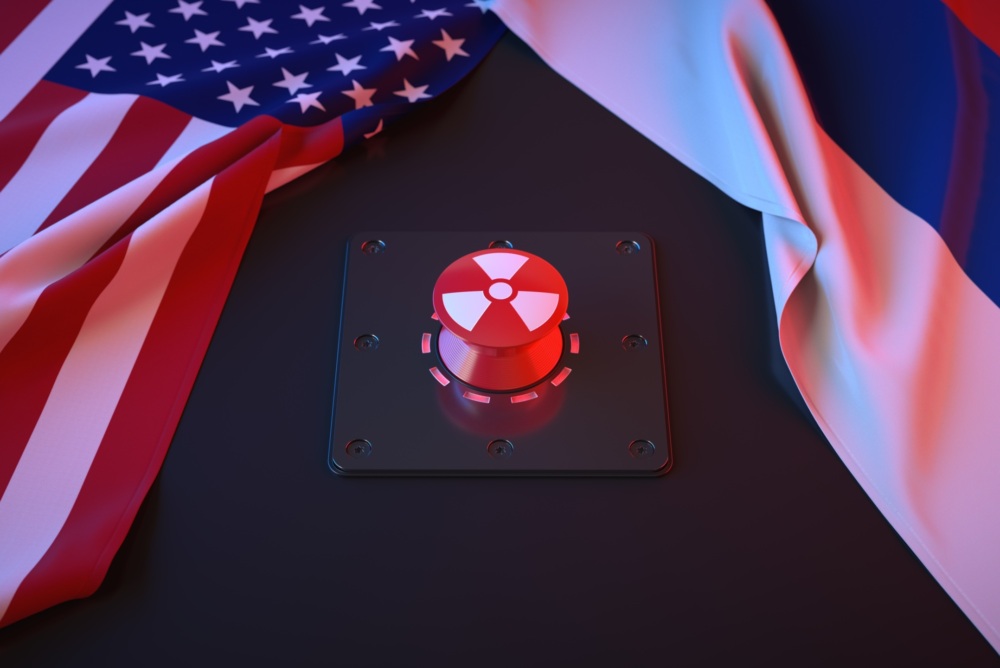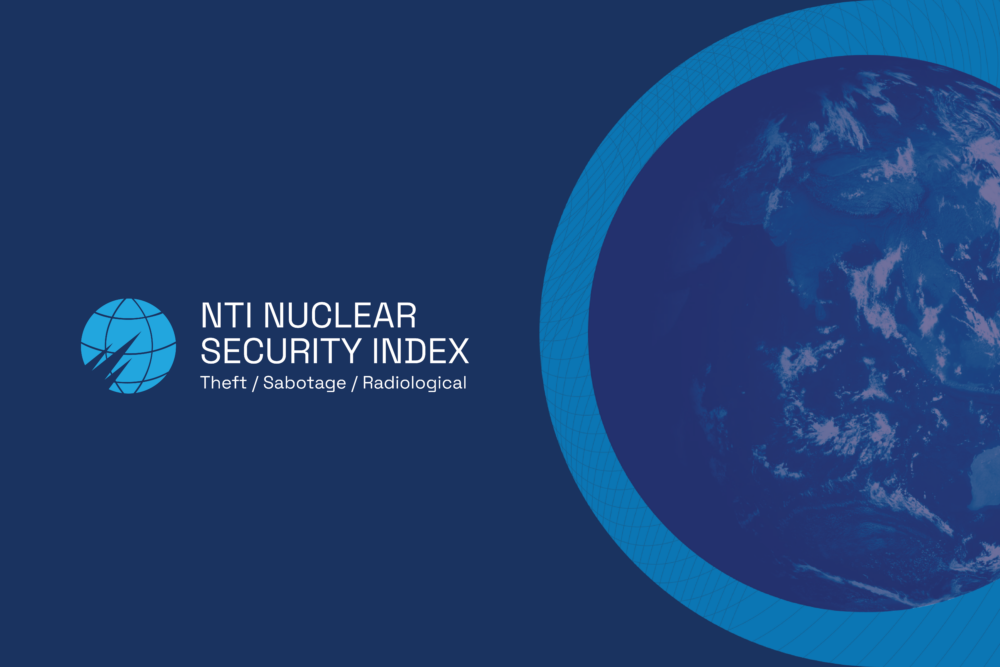
Sam Nunn
Co-Founder and Co-Chair, NTI
Introduction
Thank you for that very kind and generous introduction. I am honored to be offered the chance to address the InterAction Council, especially here in Hiroshima. The special credibility and respect enjoyed by former heads of state gives those in this hall a unique power to influence national and global policy. Thank you for using these considerable assets to focus attention on the vision of a world without nuclear weapons and the steps needed to get there.
Let me also express my deep gratitude to the citizens of Hiroshima. Today’s tour of the Hiroshima Peace Park and museum was a memorable experience. Photographs of the damage and videotaped testimony of survivors is a searing reminder of the horror of a nuclear attack. I especially want to thank those who were here in Hiroshima on August 6, 1945, for their very moving accounts of that day and what came after. It is important that the city of Hiroshima continues to tell this story – especially now, as the world’s memory is fading and the risk of nuclear use is growing.
Shultz-Perry-Kissinger-Nunn
It has been three years since George Shultz, Bill Perry, Henry Kissinger and I published an op-ed in the Wall Street Journal calling for a global effort to reduce reliance on nuclear weapons, to prevent their spread into potentially dangerous hands, and ultimately to end them as a threat to the world. In that article, we examined the changed nuclear threat, and we concluded that the world was on the precipice of a new and dangerous nuclear era. The approach we advocated was based on two pillars: first, reasserting the vision and goal of a world free of nuclear weapons; and second, outlining specific urgent steps to reduce nuclear dangers and move towards making the vision a reality.
We concluded – without the bold vision, the actions will not be perceived as fair or urgent; and without the actions, the vision will not be perceived as realistic or possible.
On behalf of Secretaries Shultz, Perry, Kissinger and myself, I want to thank the InterAction Council personally for your strong support of these ideas, and also thank your two co-chairs, Jean Chrétien and Ingvar Carlsson, as well as Hans Blix and others in this audience, for your leadership.
We all understand that ending nuclear weapons as a threat to the world will be a longterm and difficult undertaking. From my perspective, the goal of a world free of nuclear weapons is like the top of a very tall mountain. It is tempting and easy to say: “We can’t get there from here.” In our troubled world we can’t even see the top of the mountain.
But we can see that we are heading down — not up. We can see that we must turn around, that we must take paths leading to higher ground and that we must get others to move with us.
The Threat
Since the end of the Cold War, while the chances of global nuclear war have declined significantly, I believe the chances of a nuclear attack have increased. During the Cold War, the American, NATO and Soviet militaries were diligent, cautious, and highly professional in the way we handled our nuclear weapons. But we were also lucky. Anyone who thinks that luck is going to hold out with nine nuclear states and growing, plus proliferation of nuclear enrichment and know-how, is betting on very long odds. We must think anew.
There has been a fundamental change in the nature of the risks:
Each of these dangers is either new – or has worsened since the Cold War. Each one heightens the risk of the others; together, they create the conditions for a perfect storm.
Signs of Progress
This does not mean, however, that a catastrophe is inevitable. All the clouds are not dark, and world leaders are beginning to identify paths leading upward.
Near-Term Challenges
The good news is that we are identifying a number of paths up the mountain; however, there remain formidable obstacles on the paths leading to the top. Several must be overcome this year, so 2010 will be important.
The front burner challenge is the international response to nuclear programs in both Iran and North Korea, where cooperation on a broader and deeper front is essential to stopping North Korea and Iran’s nuclear weapon ambitions.
The American public’s support for President Obama’s nuclear policies – including his vision of a world free of nuclear weapons and also the ratification of negotiated treaties – will be shaped in substantial part by whether the world is successful in preventing nuclear dangers in Iran and North Korea.
The second challenge is the upcoming NPT Review Conference in New York. The world left the 2005 NPT Review Conference with negative momentum on nuclear disarmament and nonproliferation. We must not let that happen in 2010. We must find a way to:
The third challenge is the anticipated debate in the U.S. Senate over the New START agreement. The two principle areas of Republican concern relate to missile defense and our nuclear infrastructure. A strong bipartisan vote in favor of the New START treaty could create a new, and much needed, nonpartisan foundation to nuclear threat reduction. I am cautiously optimistic.
The fourth challenge this year is the drafting of a new NATO Strategic Concept – the first revision in a decade. Twenty years after the end of the Cold War, NATO governments and publics will expect, if not demand, that the Alliance re-evaluate long- standing U.S. and NATO nuclear declaratory policy, U.S. tactical nuclear weapons deployed in Europe, and the role of nuclear weapons in NATO security. Russia’s large number of tactical nuclear weapons must be part of this discussion.
Longer-Term Challenges
Looking beyond 2010, the United States and Russia – still the world’s two largest nuclear powers by far – must continue to lead towards further nuclear reductions and less reliance on nuclear weapons, if we expect the world to follow.
The next U.S.-Russian agreement is likely to be broader and harder, and take longer to negotiate than the New START agreement. The U.S. has signaled it will want to include total nuclear warhead inventories – deployed and non-deployed, strategic and tactical – in the next agreement. Russia is signaling it will remain focused on missile defense and U.S. conventional capabilities, including long-range conventional strike capabilities.
Further NATO expansion is also an issue of significant Russian concern, and it will have an effect on their nuclear posture.
It is clear that in order to make further progress on the nuclear front beyond 2010, we will have to broaden the agenda between the U.S., Russia, NATO, and Pacific nations. Neither the U.S. nor Russia will be comfortable moving to lower numbers if they fear other nuclear powers are moving upward.
Winston Churchill once said, “however beautiful the strategy, you must occasionally look at the result.” I believe that NATO, the United States, Russia and other nations must look at both the trajectory and the results of our current policies.
For example, the Nuclear Posture Review was on target in calling for a broader dialogue with China on strategic stability. We need a mechanism to exchange views with China about nuclear policies and programs including missile defense. This dialogue could improve confidence, transparency, and trust in ways that will reduce nuclear threats in Asia and around the globe.
In Europe, NATO must address a fundamental question. In the years ahead, does NATO want Russia to be inside or outside the Euro-Atlantic security arc? The same question, of course, must be asked by the Russians. If our answer is outside, then it’s simple — we both just keep doing what we are now doing and further progress in the nuclear arena will be threatened. If the answer is inside, we and Russia must make major adjustments in strategy informed by answering, at least, the following questions:
On the nuclear security side of the ledger, almost 20 years after the break-up of the Soviet Union, we continue to live with a risk of a catastrophic nuclear accident that is greater than “zero” – and higher than it should be with the end of the Cold War.
With President Obama and President Medvedev’s announced reset of relations between the United States and Russia, we have a window of opportunity to reduce risks and improve the security of the United States, Russia, Europe and the world in a meaningful way.
In order to reduce the risk of a mistaken nuclear launch to as close to “zero” as possible, the United States and Russia should pursue steps to increase warning and decision time for U.S. and Russian leaders. Such steps could include bilateral and unilateral measures relating to U.S. and Russian early warning, command and control, and force posture – including reductions in warheads on prompt launch status.
Long overdue cooperation on missile defense should also be a high priority and could be a game changer. Given the disappointing history of previous efforts to engage on missile defense both during and after the Cold War, this initiative must be directed by the two Presidents. Military to military discussions are essential. Japan and other key allies in Europe and Asia must be kept full informed, and China as well.
We must also find a way to deal with perceptions relating to conventional force postures and deployments. It is my hope that President Obama’s Nuclear Posture Review will help facilitate a meaningful discussion by the United States, NATO and Russia – in the crucial area of warning and decision time as applied to nuclear postures – but also conventional postures and missile defense cooperation. Progress in these areas could be instructive in other regions including India and Pakistan.
Nuclear threat reduction is not just an issue between the U.S. and Russia. If we are to succeed in reducing and eventually eliminating nuclear dangers, a truly “global enterprise” will be required, where many nations are not just critiquing but also contributing to solutions. In addition to securing all weapons usable nuclear material, these international efforts must include:
Critics – Questions and Response
Before I close today, it is important to note that there have been critics that have challenged the global vision of a world free of nuclear weapons. I am the first to admit that this lofty goal raises a lot of hard questions, and skeptics play an important role.
While acknowledging that the U.S. and other nuclear armed states have ratified the NPT with its commitment to nuclear disarmament, some contend that there is no realistic path to a world free of nuclear weapons.
My reply – exactly. That is the fundamental problem with the NPT and why the four of us have laid out a pathway of achievements that we believe are essential to reverse reliance on nuclear weapons and ultimately end them as a threat to the world.
We do not believe it is realistic today to set a date certain for abolishing all nuclear weapons. As my colleague George Shultz said in Paris recently, “We must go carefully, but being careful does not mean taking the attitude that time is irrelevant. Time is not on our side, so the key phrase must be ‘careful urgency.’ I much prefer this to the term ‘date certain,’ as a date that is too early risks appearing unrealistic and one that is too far in the future seems too relaxed.”
The world has to build trust, cooperation, technical capability and political will over time to have a realistic prospect of ultimately ending nuclear weapons as a threat to the world. I believe that significant successful steps are essential to build confidence. We have to reach base camp before we have a clear view of the top of the mountain. There are also a number of “end state” issues that must be carefully thought through, including managing residual nuclear capabilities, and the possibility of reconstituting nuclear forces.
A second criticism posed about the vision and steps is that a world without nuclear weapons would make the world safe for conventional war.
As my Russian friend Alexei Arbatov recently said – a world without nuclear weapons is not today’s world simply minus nuclear weapons. I agree. If we are to ascend to base camp and beyond, it must be a far different world. We must keep in mind that 50 million people were killed in World War II before the nuclear bomb was dropped on Hiroshima.
One of the essential steps we emphasized in our first Wall Street Journal article was the need to redouble our efforts to resolve regional conflicts. Peaceful and sustainable resolutions of confrontational problems like Kashmir, the Korean Peninsula, Taiwan, and the Israeli-Palestinian conflict would reduce nuclear tensions and nuclear risks far beyond any arms control treaty. These are not just regional challenges – given the nuclear implications, they are global challenges, as Malcolm Fraser made clear.
I must add, however, that the critics who make the conventional war point usually ignore and avoid today’s baseline. The nuclear world we live in today is full of perils and getting more dangerous. I believe that in a world with a growing number of nuclear weapon states and terrorists with no return address, we dare not expect nuclear deterrence to work in perpetuity – supported increasingly by luck or divine providence.
Indeed, as Malcolm Fraser said in his speech, humankind has the capacity to destroy civilization and the planet as we know it. This point was driven home by the recent Evans-Kawaguchi report, which noted that a nuclear war between India and Pakistan could cause severe "climate cooling" and could have a devastating impact on agriculture worldwide. A 2010 article in Scientific American notes that in this scenario, “One billion people worldwide with marginal food supplies today could die of starvation because of agricultural collapse.”
So, to the skeptics back home, I pose these questions: how can we defend America and the world from a nuclear catastrophe without taking these essential steps? How can we take these steps without the cooperation of other nations? And how can we get the cooperation of other nations without the vision and goal that the world will someday end these weapons as a threat to mankind? In my view: we cannot – nor can the world.
Conclusion
Let me close with a parable of hope. After the collapse of the Soviet Union, when the United States began funding work to dismantle Soviet nuclear missiles and warheads, our countries struck a deal called the U.S.–Russian Highly Enriched Uranium Agreement.
Under this agreement, which was signed in 1993, 500 tons of highly enriched uranium from former Soviet nuclear weapons is being blended down to low enriched uranium, and then used as fuel for nuclear power plants in the United States. Shipments began in 1995 and will continue through 2013.
When you calculate that 20% of all electricity in the U.S. comes from nuclear power plants, and 50% of the nuclear fuel used in the U.S. comes from Russia through the HEU Agreement, you have an interesting fact: roughly speaking, one out of every ten light bulbs in America today is powered by material that was in Soviet nuclear warheads pointed at us a few years ago.
From swords to ploughshares. Who would have thought this possible in the 1950s, 1960s, 1970s, or 1980s? It would have certainly been seen as a mountain too high to climb, and even base camp would have been lost in the clouds.
I believe that we are at a nuclear tipping point – a point where a move in the wrong direction could bring catastrophe.
But we must tip in the other direction. A global commitment to secure nuclear materials – a strong movement to reduce nuclear arsenals – a clear mandate to remove missiles from quick-launch status and make them less relevant – cooperation on missile defense – resolution of regional conflicts – each of these changes and others could reduce the threat posed by nuclear weapons – and ultimately help end them as a threat to the world. If our goal is to ensure that what happened here in Hiroshima will never happen again – and it should be – we must climb the mountain together. With your voices, your influence and your leadership, I believe that we will.
Thank you.
###
Sign up for our newsletter to get the latest on nuclear and biological threats.
There is a critical need for a global diplomatic approach to address growing cyber risks, including, where possible, through cooperation between the United States and Russia.
“The bottom line is that the countries and areas with the greatest responsibility for protecting the world from a catastrophic act of nuclear terrorism are derelict in their duty,” the 2023 NTI Index reports.
Christopher Nolan's Oppenheimer is the most high-profile film about nuclear weapons ever made.


